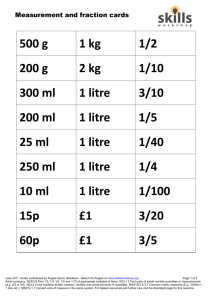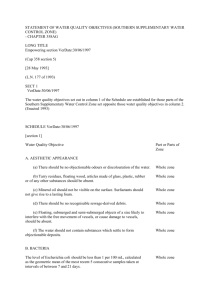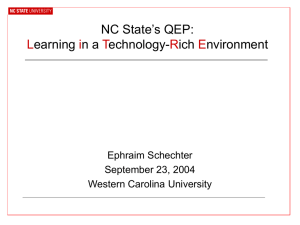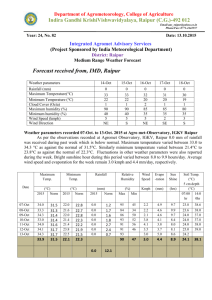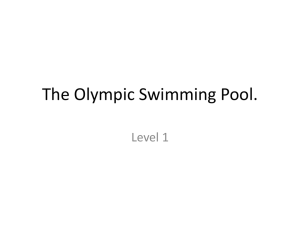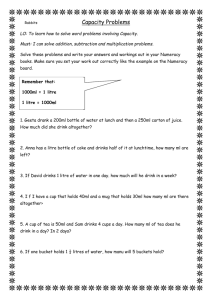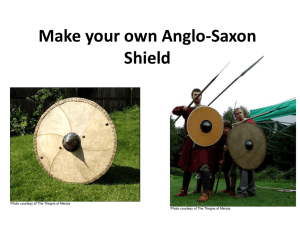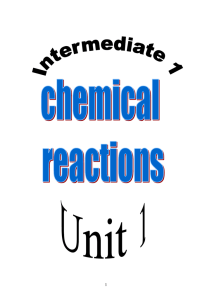Integrated Disease Management
advertisement
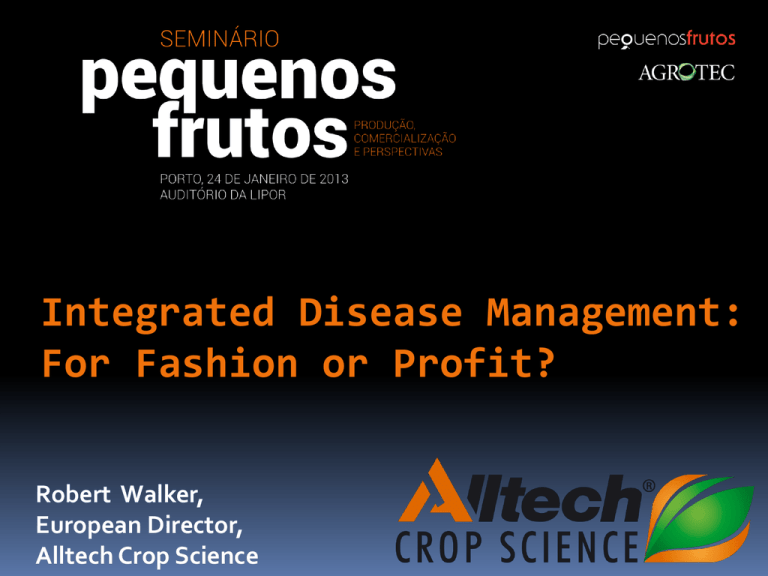
Integrated Disease Management: For Fashion or Profit? Robert Walker, European Director, Alltech Crop Science Management Integrated Disease Management? ? Chemical Technologies Natural Technologies It’s about Sustaniability Economic Social Sustainability? Environment Let’s take a closer look at 1. MANAGEMENT 2. CHEMICAL TECHNOLOGIES 3. NATURAL TECHNOLOGIES Management: Plant Variety Reduced Inoculum Disease Monitoring Microclimate - water, temperature, wind, … Management of Sub-Clinical Disease Other Chemical Technologies: Fungicide Selection Dosage Timing Resistance Natural Technologies: Bio-Fungicides Why integrate with Natural Technologies? Fungicide Resistance Withholding periods Effect chemical pesticides on: – Growth suppression & Phytotoxciticy – Soil health: Rhizophere damage “A good integrated disease management program will increase yield and quality!” Managing subclinical disease? Disease Clinical Disease (Visible) Sub-Clinical Disease (Invisible) Time Manage sub-clinical disease: Healthier plants More energy available to the plant to use for growth Better Yield and Quality! Categories of Bio-Fungicides Predator II. Competitive exclusion III. Antibiotic IV. ISR & SAR I. Predator species Living micro-organisms that kill plant pathogens Competitive Exclusion Beneficial living micro-organisms that compete with plant pathogens for the same resources. Antibiotic Natural substances that stop or slow the growth of microorganisms Rhizoctonia Control Procrop Shield Pythium Control Procrop Shield Pytophthora Control Procrop Shield Sclerotinia Control Procrop Shield Sclerotium Control Procrop Shield Alternaria Control Procrop Shield Table showing efficacy of Stubble-Aid at various concentrations Vs Common Pathogens Pathogen Minimum Inhibition Concentration of Stubble-Aid Alternaria alternata 1 ml/litre Fusarium o. f. sp. cucumerinum >10 ml/litre Macrophomina phaseolina 2 ml/litre Phytophthora infestans 1 ml/litre Pythium sp 2 ml/litre Rhizoctonia solani 1 ml/litre Sclerotinia sclerotiorum >10 ml/litre Sclerotium rolfsii 3 ml/litre Verticillium dahliae 2 ml/litre Penicillium italicum 5 ml/litre Penicillium digitatum 5 ml/litre SAR / ISR / Elicitors / Fortifiers Substances that induce the plant to defend itself using its own natural defence mechanisms. Plants are primed prior to attack such that they are ready for pathogen attack Systemic effect • Maximal 9 days after induction • Lasts for ± 21 days • Need for continual applications P R O T E C T I O N 7-9 21 DAYS Typical Berry Crop Protection Program P R O T E C T I O N Chemical Fungicide Chemical Fungicide Alternate Procrop ISR with ProCrop Shield Alternate with Regular pesticide program Chemi. Fungi. DAYS Cost of a Program that alternates Natural with Chemical? Same to lower price than “all chemical” program Benefits: Withholding period Reduced use of chemicals – long term performance Preventative program Resistance Post harvest quality Thank You Robert Walker, European Director, Alltech Crop Science

